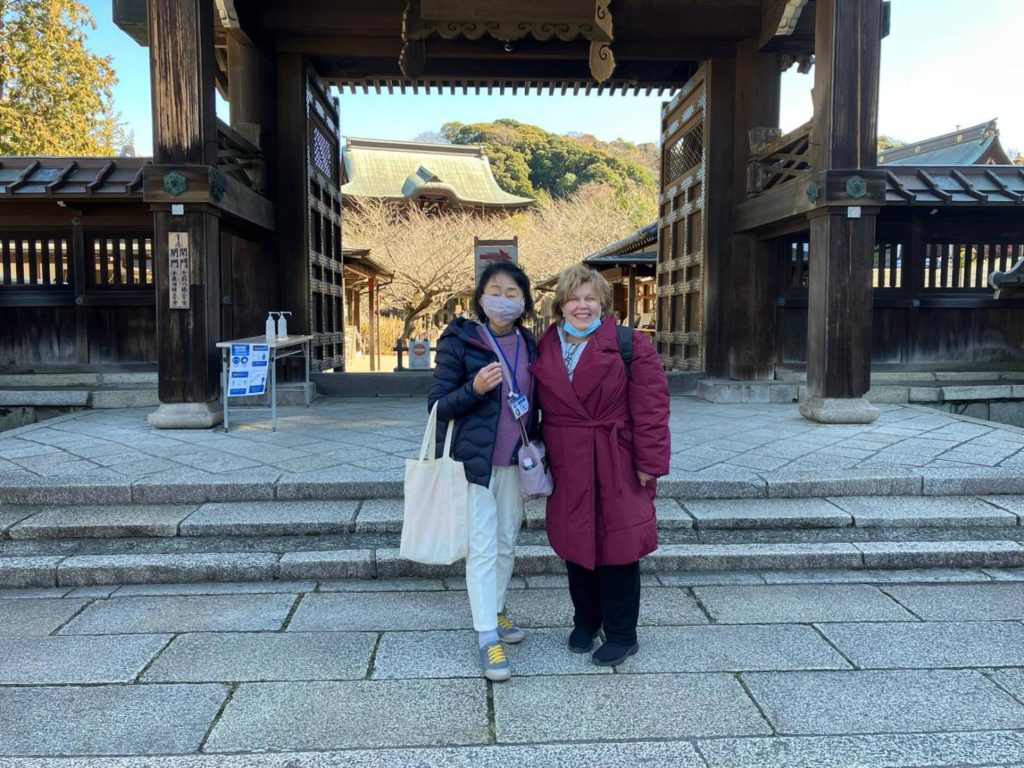Date & Time: Thursday, February 16, 10:00 a.m.- 4:00 p.m.
Guide Course: Kamakura Station→Kenchoji Temple→Tsurugaoka Hachimangu Shrine→Lunch in Koinosuke→Hasedera Temple→Hase Station→Kamakura Station
Participants: Roxanne, from Arizona, U.S.A.
Attendant: Takako, KSGG member
Language: English
Report by Takako
Our first destination was Kenchoji Temple. I explained to Roxanne that the temple is ranked the first among the five major Zen temples in Kamakura. She asked me, “Why is this temple placed the first rank?*1” Starting with this question, she questioned me one after another. When she found a bride and groom being photographed near Mushiduka*2, she asked, “Where is a priest?” When she found a green torii that was placed in front of the little shrine in the temple site, she asked, “Why is that torii not red*3?”
When she had visited Sensoji Temple in Tokyo on the first day in Japan, she was frustrated because nobody helped her find the answers for the questions about the shrine she got. Then, she decided to put questions to the KSGG guide as much as possible.
When Roxanne and I were walking in Kenchoji Temple, a group of junior high school students, who were on a school outing in Kamakura, approached her and started to talk to her. They seemed to want to speak in English they had just learned. They put her lots of questions in simple English and enjoyed chatting with her.
It was cold in the morning, so I gave her disposable hand warmer that I bought at a drugstore. She, who came to Japan with her husband on a business trip, has been researching on Japan and knows a lot about Japan. However, she didn’t know it. She was astonished to see the small bag of powder mainly made of iron and activated carbon, and said, “There are cold places in America, but I’ve never seen anything like this!”
“Your husband can sell and spread the disposable warmer in your country. It could be a big business!”, I said to her. Roxanne and I laughed loud, sitting on a bench in a quiet Zen-style garden at the back of Kenchoji Temple.
Since she came to Japan, she talked to her friends and husband every night about the events of the day. After the tour Roxanne sent me a WhatsApp message and wrote they enjoyed the story on her Kamakura journey.
*1 Originally, Indian Buddhism stipulated a top five ranking system of temples. In Japan, this system was adopted from around 1300, and the shogun decided the rank.
*2 Memorial tower for insects
*3 Originally, torii was not red in Japan. While, in Buddhism, red color has a power to avoid evil things. After the Buddhism is introduced to Japan, some shrines which adopted this idea colored the torii red. But other shrines didn’t color the ones.
